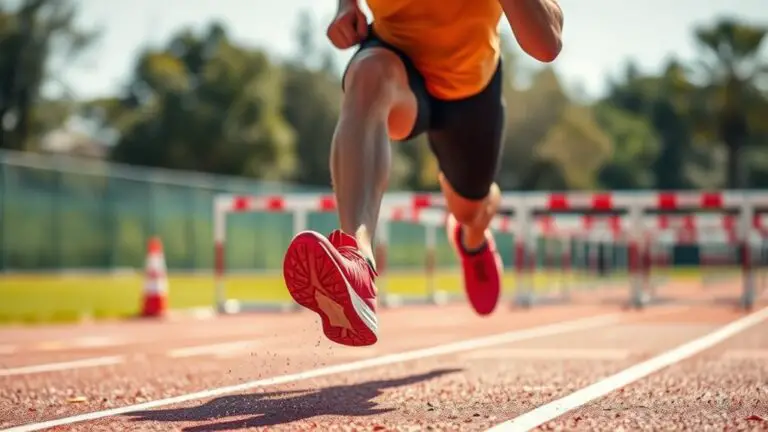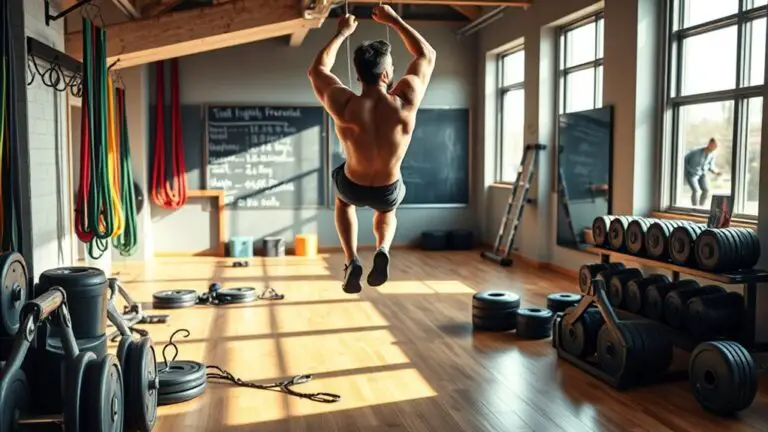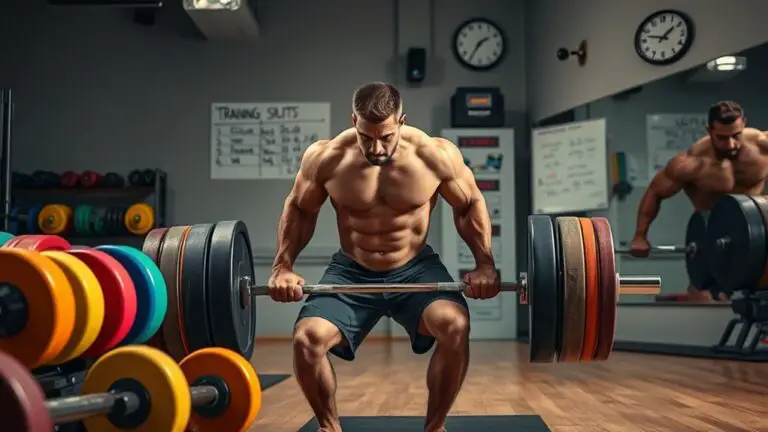How to Develop Iron Grip Strength for Grappling
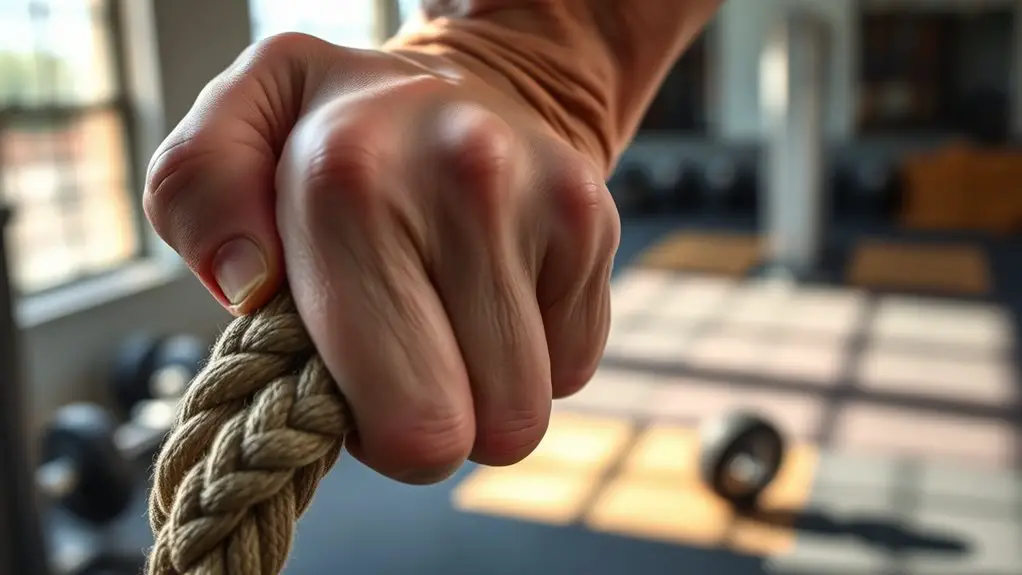
To develop iron grip strength for grappling, focus on exercises like hand grippers, towel pulls, and dead hangs. Techniques such as Farmer’s Walks and plate pinches will enhance endurance and control. Make grip work part of your routine, and set specific goals for improvement. Don’t forget nutrition and recovery; high-quality protein and proper rest are key. Stay consistent, and you’ll see impressive gains. Let’s explore more strategies to elevate your grappling performance.
The Importance of Grip Strength in Grappling
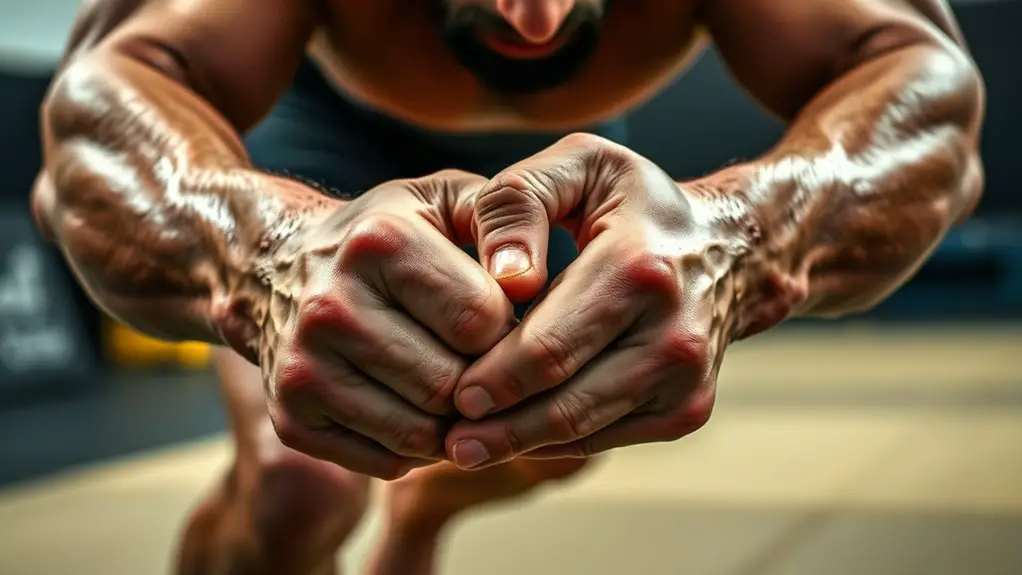
When it comes to grappling, having a strong grip isn’t just an advantage—it’s essential for your success on the mat. Your grip strength directly influences your ability to execute grappling techniques effectively. Whether you’re applying a choke, securing a hold, or attempting to escape, proper hand positioning can make all the difference. A firm grip allows you to control your opponent’s movement, preventing them from slipping away or countering your moves.
Moreover, a reliable grip can help you maintain dominance during exchanges, giving you the upper hand in positional battles. It’s not just about squeezing hard; it’s about understanding how to position your hands for maximum leverage and effectiveness. By prioritizing grip strength in your training, you’ll enhance your overall grappling game. So, stay focused and remember: a powerful grip can transform your performance, turning potential losses into victories on the mat.
Essential Exercises for Building Grip Strength
Building grip strength is vital for any grappler, and incorporating targeted exercises into your routine can yield impressive results. One highly effective method is using hand grippers. These tools allow you to isolate your grip muscles, helping to enhance your power and endurance. Aim for multiple sets of varying resistance to challenge your hands progressively.
Another fantastic exercise is towel pulls. Simply drape a towel over a pull-up bar, grip it tightly, and perform pull-ups or hangs. This not only boosts your grip strength but also mimics the gripping action used in grappling.
Additionally, consider dead hangs from a bar to build grip endurance. Hold on as long as you can, focusing on maintaining a strong grip. Regularly incorporating these exercises will greatly improve your grip strength, giving you a significant advantage on the mat. Stay consistent, and you’ll see the results!
Techniques to Improve Your Grip During Training

Mastering your grip during training can dramatically enhance your performance on the mat. To boost your grip strength effectively, incorporate these techniques into your routine. Focus on grip training and hand exercises that target different muscle groups in your forearms and hands.
| Technique | Description |
|---|---|
| Farmer’s Walk | Carry heavy weights for distance. |
| Plate Pinches | Hold weight plates between your fingers for time. |
| Towel Pull-ups | Use a towel draped over a bar for pull-ups to enhance grip. |
| Rope Climbing | Climb a rope to engage grip and core. |
| Sledgehammer Levers | Use a sledgehammer to swing and control for grip endurance. |
Tips for Maintaining Grip Strength Over Time
Although it may seem easy to neglect grip strength after achieving initial gains, maintaining it over time is essential for grappling success. To keep your grip strong, prioritize consistency in your training routine. Incorporate grip variations, like towel pulls and plate pinches, to challenge your muscles in different ways. This not only prevents boredom but also enhances grip endurance.
Set specific goals for your grip training sessions—aim for incremental increases in time or resistance. Don’t shy away from integrating grip work into your warm-ups and cool-downs; even a few minutes can make a difference.
Nutrition and Recovery for Optimal Grip Performance
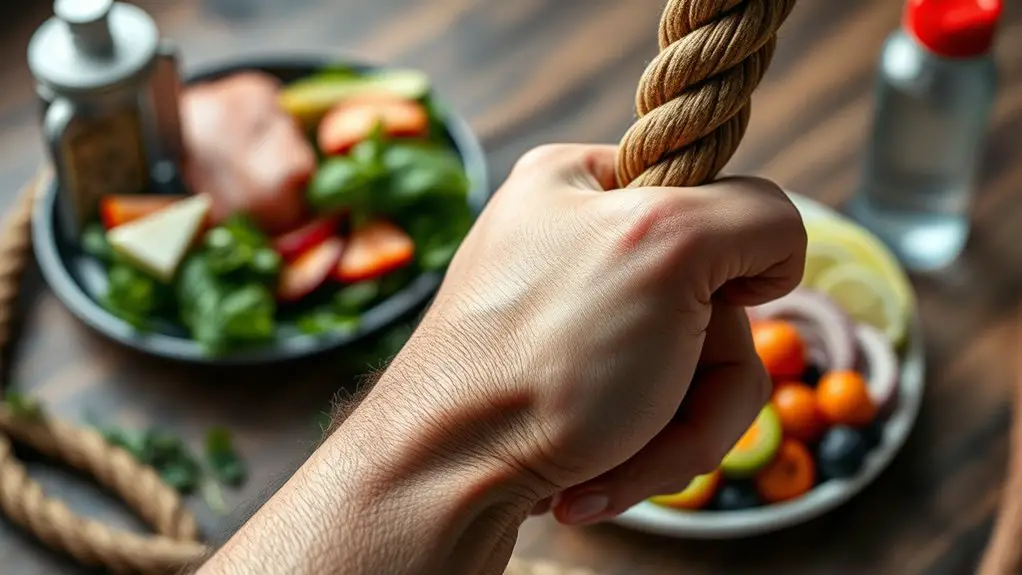
To truly elevate your grip strength, it’s crucial to focus on nutrition and recovery alongside your training. Your muscles need the right fuel to perform at their best, so prioritize high-quality proteins, healthy fats, and complex carbohydrates. Pay attention to nutrient timing; consuming protein and carbs post-workout can enhance recovery and muscle synthesis, which is fundamental for grip strength development.
Incorporate effective recovery strategies, like proper hydration, stretching, and foam rolling, to reduce muscle soreness and improve flexibility. Don’t underestimate the power of sleep—aim for at least 7-9 hours each night to allow your body to repair and grow stronger.
Additionally, consider supplements like omega-3 fatty acids and magnesium to support muscle function and recovery. By aligning your nutrition and recovery with your training regimen, you’ll set yourself up for success in achieving that iron grip you’re working towards in grappling.
Frequently Asked Questions
How Does Grip Strength Affect My Overall Performance in Grappling?
Ever wonder why some grapplers seem unstoppable? It all boils down to grip strength. It’s a game-changer for your performance enhancement. A strong grip allows you to execute grappling techniques with precision, control, and confidence. Imagine holding your opponent tightly, dictating the flow of the match. You’ll find that with improved grip strength, your overall effectiveness on the mat skyrockets. So, strengthen that grip, and watch your grappling game transform!
Can Grip Strength Be Improved Without Specific Grip Exercises?
Yes, grip strength can definitely be improved without specific grip exercises. You can focus on grip training alternatives like functional strength exercises, such as deadlifts and pull-ups. These compound movements engage your entire body and naturally enhance your grip as you lift heavier weights. Incorporating activities like rock climbing or even heavy carries can also greatly boost your grip strength. Stay consistent, and you’ll notice improvements that translate into better performance in grappling!
What Are the Signs of Grip Strength Overtraining?
When you’re pushing your grip strength limits, it’s essential to recognize signs of overtraining. Look for fatigue indicators like persistent soreness, decreased performance, or difficulty holding onto objects. These signals suggest your body needs a break. Don’t ignore them! Make training adjustments by incorporating rest days or reducing intensity. Listening to your body not only prevents injuries but also guarantees steady progress. Trust the process, and keep your grip strength journey on track!
Is There a Correlation Between Grip Strength and Injury Prevention?
Yes, there’s a strong correlation between grip strength and injury prevention. When you’ve got a solid grip, you’re better equipped to stabilize your joints and maintain control during physical activities, which reduces the risk of injuries. Plus, improving your grip strength can enhance your overall performance and endurance. So, by focusing on developing that grip, you’re not just boosting your strength; you’re also investing in your long-term health and safety in any sport.
How Often Should I Train Grip Strength for Grappling?
Imagine the feeling of your hands gripping tightly, controlling every move on the mat. To build that iron grip strength, you should train it 2-3 times a week, fitting it into your training schedules seamlessly. Incorporate specific exercises and vary intensity to keep it engaging. Consistency is key; even short sessions can yield powerful results over time. Following these frequency recommendations will have your grip feeling unstoppable when it matters most.
